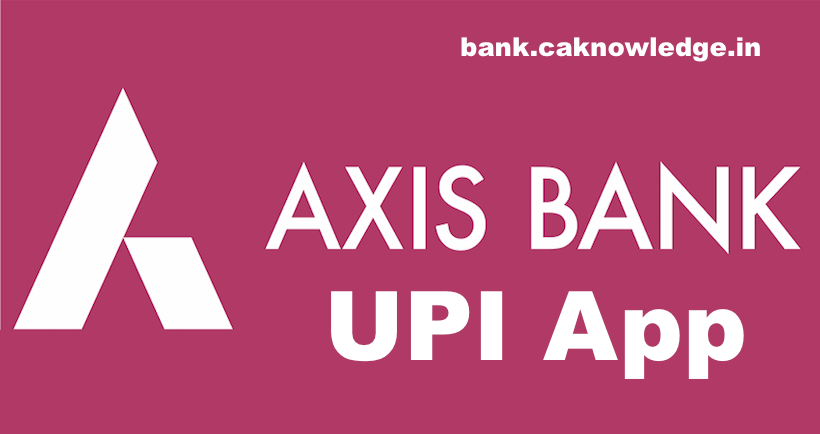Banking
Emirates NBD Online Banking
Access your accounts conveniently and securely 24/7

Banking
How to Set Up a UPI Account with HDFC Bank: A Step-by-Step Guide
How to Set Up a UPI Account with HDFC Bank: A Step-by-Step Guide

The Unified Payments Interface (UPI) has revolutionized the way we make financial transactions in India. It allows us to send and receive money instantly, anytime, anywhere, through our smartphones. One of the prominent banks that facilitate UPI transactions is HDFC Bank. If you are an account holder at HDFC Bank and want to leverage the power of UPI, this step-by-step guide is tailor-made for you. Here, we will walk you through how to set up a UPI account with HDFC Bank.
Step 1: Install HDFC Mobile Banking App
First, you need to install the HDFC Bank MobileBanking app on your smartphone. You can download it from the Google Play Store or the Apple App Store, depending on your device.
Step 2: Log in to Your Account
Once you have installed the app, open it and log in to your HDFC Bank account using your Customer ID and Password or Quick Access PIN.
Step 3: Navigate to UPI Section
After logging in, navigate to the ‘Funds Transfer’ section. Here, you will find the ‘UPI’ option. Click on it.
Step 4: Create a New UPI ID
After navigating to the UPI section, you will see an option to ‘Create UPI ID.’ Click on it.
Step 5: Provide Required Details
You will now be prompted to enter your account details and choose a UPI ID. The UPI ID is like your unique digital address for UPI transactions. It typically ends with “@hdfcbank.” Make sure to remember this ID as it will be needed for all future UPI transactions.
Step 6: Set Your UPI PIN
Next, you will be asked to set a UPI PIN. This PIN will be required each time you make a transaction. Make sure to choose a unique and hard-to-guess PIN.
Step 7: Confirm Your Details
After setting the UPI PIN, you will be shown a summary of your details. Confirm them, and you’re done. Congratulations! You have successfully set up your HDFC Bank UPI account.
The Bottom Line
UPI has made our lives easier by simplifying the process of making payments. And setting up a UPI account with HDFC Bank is a breeze, thanks to their user-friendly mobile app. So if you’re an HDFC Bank customer and haven’t yet set up your UPI account, follow this guide and join the digital payments revolution.
We hope this step-by-step guide on setting up a UPI account with HDFC Bank was helpful. If you have any questions or encounter any problems while following these steps, feel free to reach out to HDFC Bank’s customer service.
We’re excited for you to take the next step in your digital banking journey with HDFC Bank and UPI. So, go ahead and set up your UPI account today.
Happy banking!
(Please note that this guide is accurate as of the time of writing. The process for setting up a UPI account with HDFC Bank might change in the future. Always check with the official HDFC Bank resources for the most up-to-date information.)
Banking
How to Setup a UPI Account with Axis Bank: A Step-by-Step Guide
How to Setup a UPI Account with Axis Bank: A Step-by-Step Guide

If you’re seeking an efficient and convenient way to handle your monetary transactions, Unified Payments Interface (UPI) is the perfect solution for you. Designed by the National Payments Corporation of India, UPI simplifies your bank-related operations significantly. In this article, we will walk you through how to set up a UPI account with Axis Bank in a comprehensive, step-by-step fashion.
Understanding UPI
But first, let’s delve into the concept of UPI. Unified Payments Interface (UPI) is a payment system that allows instant money transfer between any two bank accounts using a mobile platform. It’s interoperable across various banking platforms, which means you can operate different bank accounts through a single mobile application.
The Benefits of UPI with Axis Bank
Creating a UPI account with Axis Bank brings along numerous advantages:
- It’s available 24/7, making it an extremely convenient way to transact.
- Offers real-time transaction processing.
- Has a simple, mobile number-based identification process.
- Enables ‘Peer to Peer’ collection requests and instant payment approvals.
By setting up a UPI account with Axis Bank, you can enjoy these benefits and many more!
Step-by-Step Guide to Setting up UPI with Axis Bank
Before proceeding, ensure that you have the following:
- An Axis Bank account
- A smartphone with internet connectivity
- Your registered mobile number linked to your Axis Bank account
Step 1: Download the Axis Bank Mobile App
The first step is to download the Axis Bank Mobile App from the Google Play Store or the Apple App Store, depending on the smartphone you use.
Step 2: Open the App and Navigate to UPI
Once the app is installed, open it and locate the ‘UPI’ option in the menu.
Step 3: Select ‘Send Money using UPI’
Next, tap on the ‘Send Money using UPI’ button, and then choose ‘Create New UPI ID.’
Step 4: Link your Axis Bank Account
Here, you’ll have to link your Axis Bank account. To do so, select ‘Add Bank Account’ and pick ‘Axis Bank’ from the list of banks. Make sure your phone’s SIM card matches the mobile number linked with your bank account.
Step 5: Create your UPI ID
Your UPI ID, also known as a Virtual Payment Address (VPA), will be auto-generated. It usually follows the format: ‘yourname@axisbank’. You have the option to change this if you want to.
Step 6: Set your UPI PIN
You’ll need to set a UPI PIN for your transactions. You’ll be asked for your debit card details to set the UPI PIN.
That’s it! You’ve now successfully set up your UPI account with Axis Bank.
Conclusion
This simple step-by-step guide is all you need to effortlessly set up your UPI account with Axis Bank. Enjoy the convenience and efficiency of online banking, and make your financial transactions a breeze. Be sure to safeguard your UPI ID and PIN to ensure the security of your transactions.
Embrace the digital era with UPI, and make your banking experience seamless and enjoyable!
Banking
How to Set Up SBI Internet Banking: A Step-By-Step Guide
How to Set Up SBI Internet Banking: A Step-By-Step Guide

In the digital age, traditional banking practices are gradually giving way to more advanced, secure, and convenient methods. One such method is Internet banking, a service that has transformed the way we manage our finances. If you are an account holder with the State Bank of India (SBI), this article will guide you through the process of setting up your SBI Internet Banking.
Before we start, let’s take a look at the key benefits of SBI Internet Banking:
- Convenience: Internet banking saves you from the hassle of visiting your bank for every transaction.
- Accessibility: It allows you to access banking services 24×7, from anywhere across the globe.
- Efficiency: It reduces the time spent on managing finances, making transactions faster and easier.
Now let’s dive into the step-by-step guide to setting up your SBI Internet Banking account.
Step 1: Visit the Official SBI Website
To begin with, visit the official SBI website. The homepage of the site is user-friendly and provides clear navigation to all the services offered by SBI.
Step 2: Navigate to Personal Banking Section
Once you’re on the SBI homepage, look for the “Personal Banking” section. You’ll find an option called “Login” under this section. Click on it to proceed to the next step.
Step 3: Read and Accept the Terms and Conditions
Before you start using SBI’s Internet banking services, you need to read and accept the Terms and Conditions. Make sure you understand all the points before clicking on “Continue to Login”.
Step 4: Click on ‘New User Registration’
On the login page, you will find a button labeled “New User? Register here/ Activate”. Click on this button to initiate the registration process.
Step 5: Fill in the Required Details
You will be asked to provide several details for registration, including your SBI account number, CIF number, branch code, country, registered mobile number, and the facility required. You can find your CIF number and branch code in your SBI passbook. After filling in the details, click on “Submit”.
Step 6: OTP Verification
Upon submission, an OTP (One Time Password) will be sent to your registered mobile number. Enter the OTP in the given field to verify your identity.
Step 7: Set Your Login Password
Next, you’ll need to set a password for your Internet Banking account. It’s advisable to choose a strong, unique password to ensure your account’s security.
Step 8: Confirmation
Once you’ve set the password, you’ll see a confirmation message stating that your registration is successful. You can now login to your account using your username (which is the same as your CIF number) and the password you just set.
Step 9: First Login and Profile Password
During your first login, you will be asked to set a profile password, provide a hint question and answer, and enter your date of birth, place of birth, and your gender. Your profile password is an additional layer of security and will be required for performing certain transactions or accessing specific sections of your Internet Banking portal.
That’s it! You’ve successfully set up your SBI Internet Banking account. Now you can enjoy seamless banking services at your fingertips.
Remember, Internet banking, while being a powerful tool, is also a responsibility. Be sure to follow best practices for secure banking, such as regularly changing your password, avoiding public Wi-Fi networks for banking transactions, and installing a good antivirus software on your device.
Internet banking has simplified our lives, and understanding how to utilize it effectively can make managing our finances a breeze. Whether it’s for paying bills, transferring funds, or tracking your spending, SBI Internet Banking is your go-to solution for easy and secure financial management.






